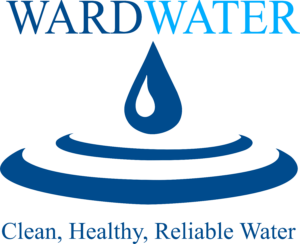What is Reverse Osmosis?
Reverse Osmosis, to me, has always had that very sophisticated and impressive sound to it. The nice part is, the systems work almost as impressively as they sound. You may be looking into a Reverse osmosis system if you have some nasty things in your water like Arsenic, Uranium or even bacteria.
But has anyone actually explained to you what these systems do, or how they work?
In this article we’ll take a quick “101” look at Reverse Osmosis and answer questions like:
-How does Reverse Osmosis work?
-What water contaminants can it be used for?
-What are the pros & cons to RO systems?
Reverse Osmosis…That Sounds Impressive!
The name alone – “Reverse Osmosis” – has a fairly magical sound to it. It sort of has that high-tech, equipment that can fix anything kind of feel. I think this fact alone has played at least some part in the popularity explosion residential RO systems have experienced in the last 20 years.
But what is Reverse Osmosis and how does it work?
Believe it or not, there’s really nothing magical to it. Reverse osmosis is actually a very simple (and effective) process.
How Reverse Osmosis Works
Reverse osmosis is a form of “membrane filtration.”
The process uses pressure to push water through a membrane filter that is
 designed to capture very small “dissolved” particles or contaminants – contaminants that are so small in diameter that a traditional paper-type cartridge filter or whole house mineral filter simply cant catch.
designed to capture very small “dissolved” particles or contaminants – contaminants that are so small in diameter that a traditional paper-type cartridge filter or whole house mineral filter simply cant catch.
The “pores” on traditional filters are just too large, so contaminants like Arsenic, Uranium and Bacteria just pass right through…into your home’s water.
 With an RO system, the pores on the filter membrane are so tiny that they refuse to allow the bad stuff to pass through. Contaminants become trapped by the membrane, unable to find their way into your drinking water.
With an RO system, the pores on the filter membrane are so tiny that they refuse to allow the bad stuff to pass through. Contaminants become trapped by the membrane, unable to find their way into your drinking water.
Once the water passes through this RO membrane, the treated water on the other side is virtually free of the undesired contaminant(s). The treated water then continues onward into your home via 
a small dispenser faucet mounted at a sink (or through normal household piping in the case of whole-house RO systems).
The pores on these membranes will eventually become completely filled with contaminants. The more water that’s used, the quicker this will happen. To maintain their effectiveness RO systems do require periodic membrane change-outs. In the case of a “point of use” (single spout) RO system, in the typical home this will need to be performed somewhere around the 3-4 year mark.
The filter membrane is swapped out either by the homeowner or by their water treatment professional. The new membrane is installed and the old membrane is discarded. Now the entire process is ready to start all over again, almost as if nothing ever happened!
What is Reverse Osmosis used for?
There are many different contaminants Reverse Osmosis systems are extremely effective at capturing. Some of the more common uses for RO systems include:
-Arsenic
-Uranium
-Bacteria
-Fluoride
-Sodium
*It’s worth noting that there are certain stipulations that go along with several of these contaminants, when it comes to using a Reverse Osmosis system – especially with contaminants like Arsenic.
Each set of circumstances is unique. No two sets of water results are exactly alike. This can have a LARGE effect on whether or not you decide to install an RO system in your home.
Before installing a system its a very good idea to first have a thorough and comprehensive water test performed by a state certified laboratory. Once you’ve done this and received the test results, speak with an experienced water treatment professional about your concerns to see if RO is a viable option or not.
The Pros and Cons of RO
The Pros
Cost. Most decent quality point of use RO systems can be professionally installed in a home for less than $1200. Considering how much these systems are capable of accomplishing, ROs are possibly the most bang for your buck when it comes to water purification.
Treating Multiple Contaminants. If you viewed the list above, you already know that RO systems are capable of removing many different kinds of contaminants from a home’s water. This is a big part of their popularity. If you end up in a situation of having more than one type of contaminant in your water, such as both Arsenic and Uranium, an RO system may be just what the water doctor ordered! Once again, it’s important to look at the entire picture when it comes to you water. Make sure your treatment professional fully understands this.
Low Maintenance. Maintenance is low when it comes to RO systems. Once
per year you’ll want to change out the pre-filter cartridges on the system. Most homeowners can do this themselves in about 45 minutes (cost for the replacement kits are usually around $60). Other than that, you just need to make sure to replace the membrane itself, every 3-4 years, as mentioned. These also cost around $60. Changing the membranes out is definitely more time consuming and technical. It may be a wise idea to have your treatment professional perform this part for you – at least for the first time around.
The Cons
ROs are Finicky! Reverse Osmosis systems are a lot like a kid with a very picky appetite – they aren’t going to be too happy if you try to feed them certain things! Minerals like hardness (calcium), Iron and Manganese are NOT good for ROs. The membrane pores are just way too small for these minerals. The pores end up clogging up and fouling…very quickly. Before you know it you’ll be changing out the membrane and pre-filters faster than you can say “sixty dollars.” You”ll be saying it a lot, too. If you have any amount of these minerals in your water, you’ll want to seriously consider installing either a softening systems or some sort of mineral filtration unit before installing an RO system.
Water Pressure and Flow. One of the downsides to point of use RO systems is their flow. The amount of water that comes out on the “treated” side of an RO membrane is a lot less than what’s on the starting side. Because of this the dispenser faucets for RO systems are fairly small (1/4″) and only capable of producing just so much pressure. You will want to keep this in mind if you typically use large amounts of water for drinking or cooking, at any one time. Filling a pot or gallon jug can be a much slower process than what you may be used to, when compared to your kitchen’s faucet.
 Slow to Re-make Water. As a follow up to the preceding paragraph, you may want to consider installing a slightly larger storage tank on your system, if you plan on requiring large amounts of water. The standard storage units that come with RO systems typically hold around 2 1/2 gallons of treated water, available at any given time. Although this is a fair amount of water, it’s still worth thinking about going with a larger tank. Once that water is gone it will probably take at least 90 minutes or so for the system to treat and re-supply that 2 1/2 gallons in the tank. A larger tank will allow you to “bank” up a bigger supply of treated water during times you’re not using water. With a larger tank, you’ll be far less likely to find yourself without treated water.
Slow to Re-make Water. As a follow up to the preceding paragraph, you may want to consider installing a slightly larger storage tank on your system, if you plan on requiring large amounts of water. The standard storage units that come with RO systems typically hold around 2 1/2 gallons of treated water, available at any given time. Although this is a fair amount of water, it’s still worth thinking about going with a larger tank. Once that water is gone it will probably take at least 90 minutes or so for the system to treat and re-supply that 2 1/2 gallons in the tank. A larger tank will allow you to “bank” up a bigger supply of treated water during times you’re not using water. With a larger tank, you’ll be far less likely to find yourself without treated water.





